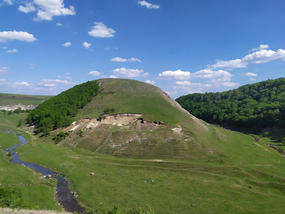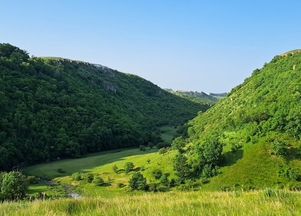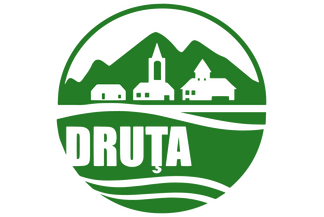Gordinești
History
The village of Gordinești is attested on 27 May 1427.
History tells us that in 1429 the first census was taken, according to which 18 households of peasants were registered. The village was situated on the estate of the landlord Neagoe-Negoiță and was called Negoești. Later, a Polish landlord by the name of Gordinschii settled on these lands and the name of the village was changed from Negoești to Gurdinești. His house was built on the rock in the garden of Mihai Cibotaru, where Lida Drăgan lived. It had a hut with 3 rooms. After him came six more people from across the Prut, including a woman named Alba who also became his wife. They founded their own farms, had sheep, cows, grew Tatar corn, from which they learned to make bread and mămăligă (cornmeal or polenta). They stored the corn in pits of earth. One of the villagers, Tănase Ferea, built a mill with shovels in Iorga's garden (Victor Mancuș lives there today). Apart from farming and cattle raising, they were also engaged in stone carving. The oldest cross in Moldavia in the Golgotha style, carved in 1552, is still preserved today.
The census of 1774 shows that there were 23 households in the village and the village already had a wooden church, where the archives of the Basarabia governorate were kept. In 1862 the parish school was opened in the village. Little by little, the village grew to 1,750 ares and 161 households.
In 1914 the First World War started and in 1917 Gordineștii was occupied by the Austrians. The border was on the boundary of the village of Volodeni. Hritu, a man skilled in many things, settled in the village. He dug and strengthened the rock quarry.
In 1941 the Second World War began, in which 115 people from the village fell. After that there were collective and communal farms.
There are currently 1200 households and 3020 inhabitants in the village. Agriculture is still the material source of the locals, the true face of the countryman' soul.
Legend
"AT THE CASTLE" LEGEND
In the north-west of the country, a short distance from the town of Edinet, near the village of Gordinesti, we find landscapes of rare beauty shrouded in legends.
The Gordinești - Buzdugeni - Brînzeni natural complex in the Racovăț river basin forms the "La Castel"/"At the Castle" landscape reserve . The locals of Gordinești certainly believe that the wonderful Castle is not only a legend, but a reality. They say that the palace made of rocks was destroyed after the occupation of Bessarabia, and until a few decades ago, some elements were still preserved here, including a carved table surrounded by stumps.
Legend tells us that the name "La Castel"/"At the Castle" is linked to a beautiful love story and a castle that disappeared in the mists of time, leaving only the tall rocks and the memory of a young girl imprisoned within its walls. It is said that two young people once lived a beautiful love story. There was a beautiful girl in the village with whom a Turk fell in love. The girl's parents were against her engagement to her lover, so he decided to kidnap her and hide her in the castle. Hunting parties were sent from the village to fetch the girl, but to no avail. It is said that when the posse was ascending to the castle, they came across a very rich meal in one of the caves. They tasted everything and drank more than just a glass, and then they all fell asleep as logs. Most of them were exhausted and did not continue their mission. At that moment something happened and the castle went underground. Nothing was left, neither the beautiful girl, nor her young lover, nor the castle, only the legend survived and the Racovăț river that meanders through the rocks of this place. Today the castle is no more, but the enigmatic name "La Castel" remains.
Beautiful places

The Dragon's tooths
At the border between the village of Gordinesti and the village of Volodeni there is a cliff 8 metres high and 20 metres long. The travellers who came to visit the landscape reserve "LA CASTEL" gave it the name "THE DRAGON'S TOOTH". From here you can enjoy a breathtaking view of the beauty of nature.
Read more
The "LA CASTEL" Gorge
A wonder of nature located above the Racovăț river valley, near the village of Gordinești is the landscape reserve "La Castel". This heritage of the Moldovan countryside is part of the picturesque chain of the Prut Cliffs (Sarmatian coral reefs)
Read moreFigures
Dumitru Șcerbatiuc (b.25 September 1941). His father, Ion Șerbatiuc, with a 4-year high school degree, was the first headmaster of the village school after the war. Dumitru, after graduating from the village middle school, went to Odessa Medical Institute. He worked for two years at the Leova district hospital, then he did postgraduate studies at the Institute of Medicine in Chisinau in the department of oral and maxillofacial surgery. He worked as head of the science department of USMF (Moldova State Medical University), university assistant, university lecturer. He defended his PhD thesis at the Academy of Medicine “M. Secenov" in Moscow. He is a university professor, head of department, senior specialist of the Ministry of Health, Head of the Department of Maxillofacial Surgery of the USMF. He has published more than 250 scientific papers (articles, methodical guidelines, monographs), and has more than 6,500 surgical operations on the head and neck. He founded the society of plastic surgery in Moldova. He is a member of the European and world societies of maxillofacial and plastic surgeons with centres in England, USA and the Netherlands. He has presented scientific reports at many congresses and international symposia. Honorary Member of the Romanian Academy of Medical Sciences.
Tamara Ciuhrii - Moraru, born Ciuhrii (b.March 22, 1958), graduated from the Institute of Arts, Faculty of Directing, then from the Moscow Institute of Culture, majoring in Philosophy of Culture (PhD). SHe worked at the Department of Philosophical Sciences of the Academy of Music, Theatre and Fine Arts. Currently based in the USA.
Dragan Leonid, folk craftsman. (1930 - 2008) Born in the village of Gordinesti, Edinet in a large and intellectual family of 6 children, being the 5th child. His father's roots were in music and his mother was the daughter of a priest. He finished 4 classes in his native village, then in Edinet, the present "Pan Halippa" High School, and then in Hotin, where he studied accounting. Painting was a hobby, he liked graphics, painted portraits.
In 1953 he got married and moved to Fetești village, Edinet district. He was a good householder, an exemplary husband and father. He raised and educated a daughter named Claudia Dragan.
He was repressed and taken to Siberia, but even there he continued to work with graphics. After his return, he also took up painting.
He painted iconostases in the churches of Burlănești village, Edineț district and Sauca village, Ocnita district, icons, one of which he donated to Putna Monastery.
At the exhibition of painters from the Republic of Moldova, at the Creation Center organized by Tudor Colac, where he presented his works, he was given the title of ,,Folk Master".
Video presentation
In the following video presentation, you will be invited to discover the beauty of the banks of the Prut River in the Republic of Moldova. This picturesque area is known for its idyllic landscapes, where the river Prut flows quietly through the hills
photos by Iurie Sveț – www.hikeme.club


 ro
ro
 ru
ru
















